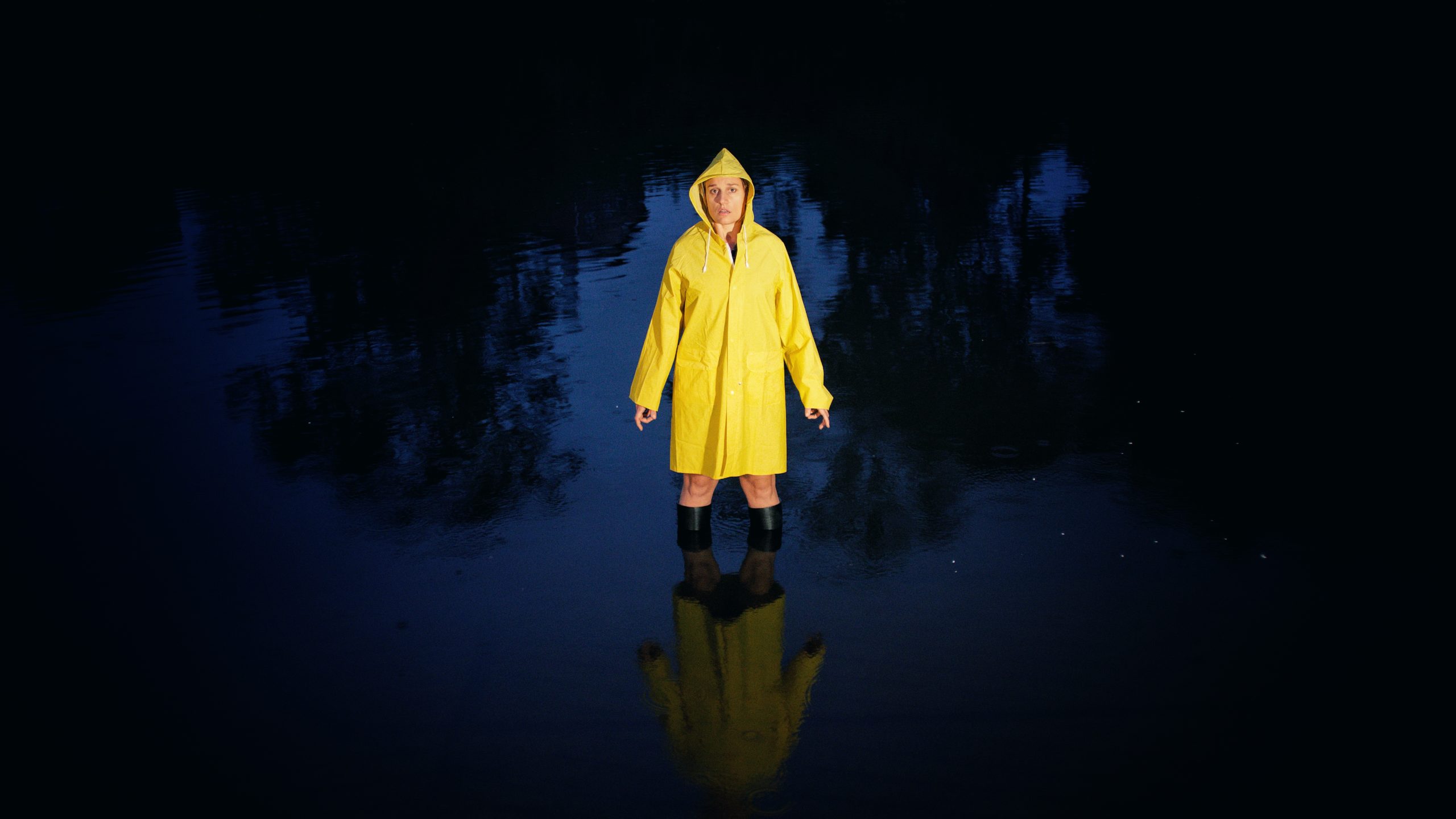Jeanti St Clair is a media lecturer at Southern Cross University in Australia, and a documentary and audio walk producer. She is the producer of Flood Stories, an audio walk/installation in Lismore NSW, making Flood Stories our first submission for Sound Walk September 2020. Here, Jeanti is talking about her new work.
In March 2017, Tropical Cyclone Debbie sent a deluge of water and wind down the east coast of Australia and into the Northern Rivers, where I live. It is so named because the region is fed by a vein-like network of seven rivers, and their related creeks and streams. The land is rolling volcanic hills and floodplain, with remnants of the sub-tropical rainforest known as The Big Scrub.
I live in Lismore, which rests at the point where Wilsons River meets Leycester Creek (which is really a river) and proudly calls itself a flood town. But when Cyclone Debbie’s stormwater made its way down the catchment on March 31, towards my town, it was clear that this flood would be big. Bigger than the levee that had been installed in 2005 to protect the Central Business District (CBD) and lower-lying residential areas around it. The 2017 flood was the worst since 1974; the town was devastated and declared a disaster zone.
Three years on, Lismore has an opportunity to reflect on what we’ve learned from that flood, and how we’ve changed as individuals, and as a community. As a documentary maker, and an audio walk producer, I had the idea that we could invite people to share their flood stories in an audio installation/walk. In a public call out, I invited anyone to tell their story. I ran storytelling works and then, using Stephan Schwartz’s The Moment Interview method, did an extended interview with each participant, which were then edited down to around a 15-minute audio story, each.
Flood Stories is set in a shipping container placed in our public square, The Quad, as if it had been dumped there by the flood waters. Inside the container are two coat racks that run the length of the side walls. We see two rows of bright yellow raincoats hanging on brass hooks, with a pair of gumboots sitting beneath each one. In the pocket of each raincoat is a small audio player and set of headphones.

To experience Flood Stories, you enter the shipping container and are asked by an attendant if you would like to listen to a story about surviving the flood or one about being part of the rescue and recovery teams. There are 12 stories available to choose from. You are then kitted out with a raincoat, gumboots and audio gear. You put on the headphones, press play on the audio player and are directed by the storyteller to walk around The Quad and surrounding CBD streets while listening to the story, before returning to the shipping container.
While my other audio walks have been geolocated, I have purposefully stripped back Flood Stories to the basics of voice, instructions, an mp3 player and a hand-drawn map of the route. I’ve done this to focus the walker’s attention on the intimacy of the voice, the story and the place it is heard in.
I was broadly inspired by the Empathy Museum’s A Mile in My Shoes project, which I had an opportunity to try out at HearSay 2019 in Kilfinane, Ireland. Their philosophy suggests that an embodied/walking listening practice can support an empathetic engagement by the listener with the person’s story. When we walk as if in someone’s shoes, we are more open to understanding their experiences. The simplicity of this presentation, and the trope of the listener needing to wear the shoes of the storyteller was appealing.
I have also designed Flood Stories as a form of participatory theatre. For me, the performative requirement is in that the listener does more than listen; that they walk, they don a costume that signifies to the public their involvement in Flood Stories, and that marks them out as part of something bigger. Unlike A Mile in My Shoes where the listener wears the storyteller’s shoes, Flood Stories’ listeners wear a uniform of sorts, which emphasises the shared nature of our flood experience.

Opening on the third anniversary of the Cyclone Debbie flood, Flood Stories is framed around the third phase of recovery from trauma: reconnection and integration (Hermann, 1992). The person is no longer defined by their trauma but can share their story without re-experiencing the trauma. Flood Stories is an opportunity for the Northern Rivers community to reconnect around the key themes of preparedness, resilience and our learnings from the 2017 flood, and to engage in story-sharing to aid mental health recovery and release.
In the public call out for storytellers, I was inundated with people saying they had not yet had an opportunity to tell their flood story. So, I am extending the opportunity for the public to record a five minute version of their story on their phone or their reaction to the Flood Stories installation and email it to the project. That content will be added to an online repository of flood stories.
Flood Stories is showing at The Quad from March 31 to April 9, 2020, in Lismore, NSW. The announcement on the website of The Quad is here, the listing on this website for the launch is here.


